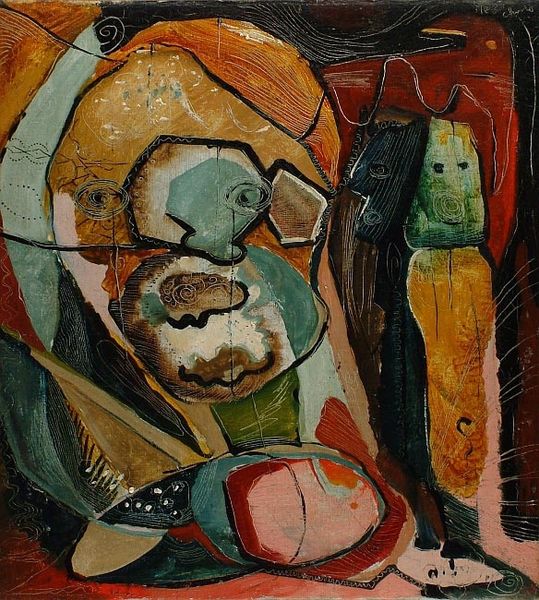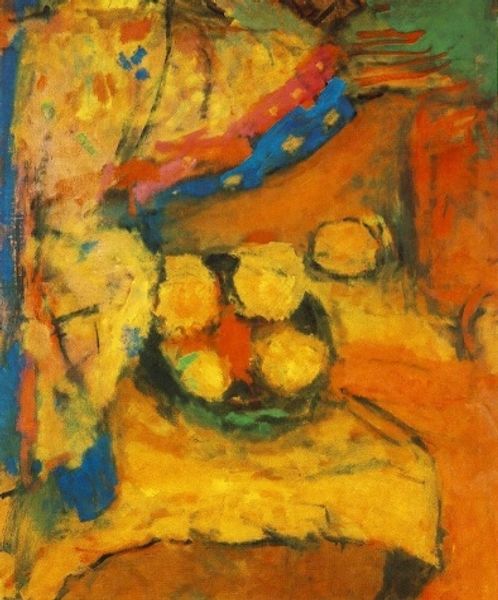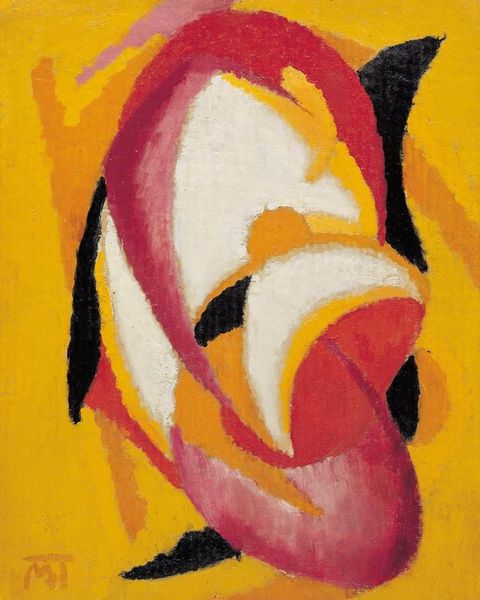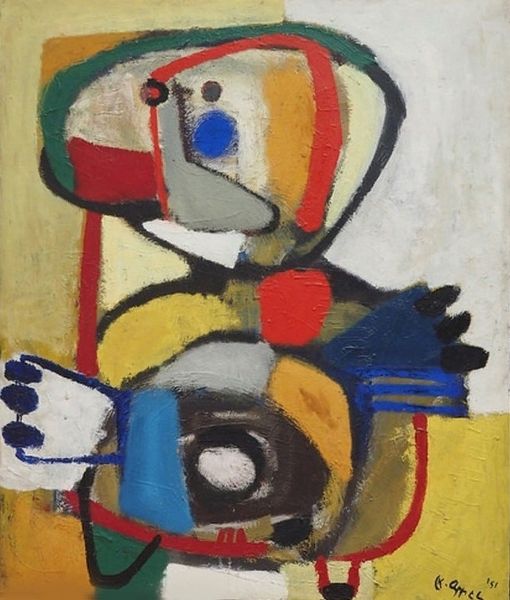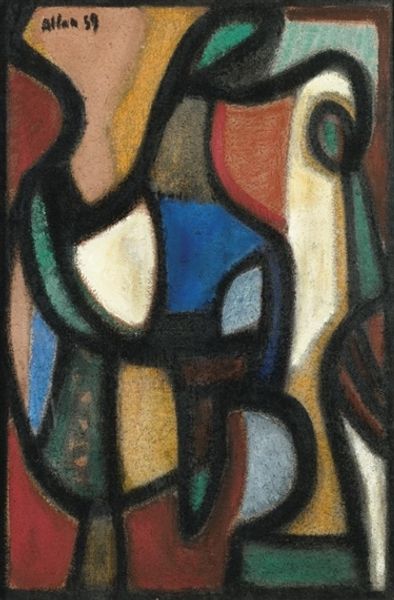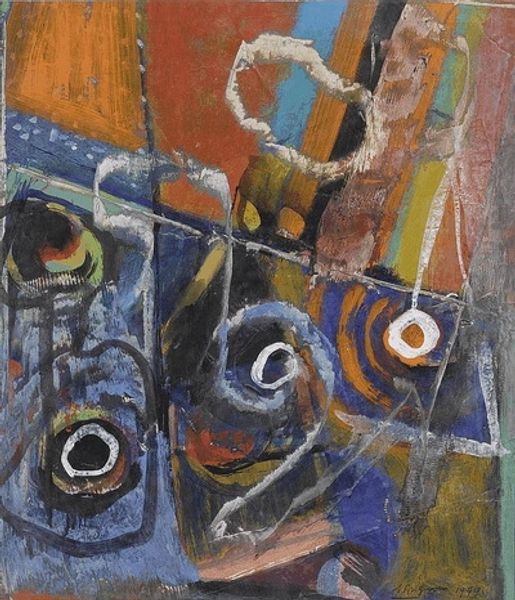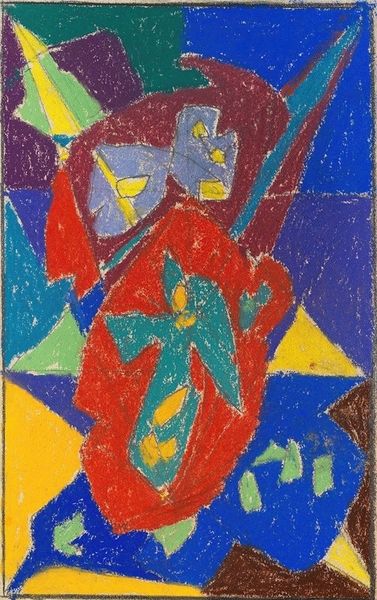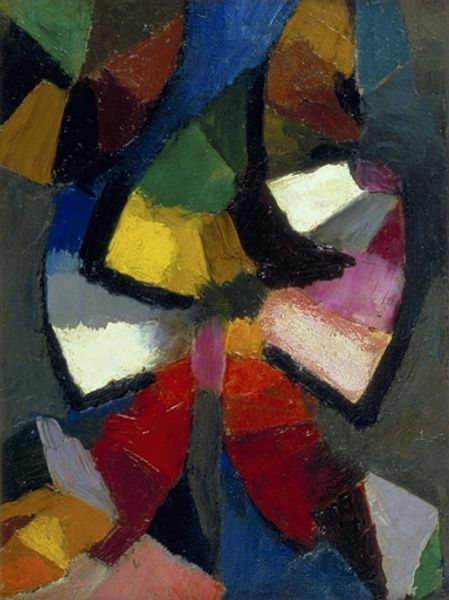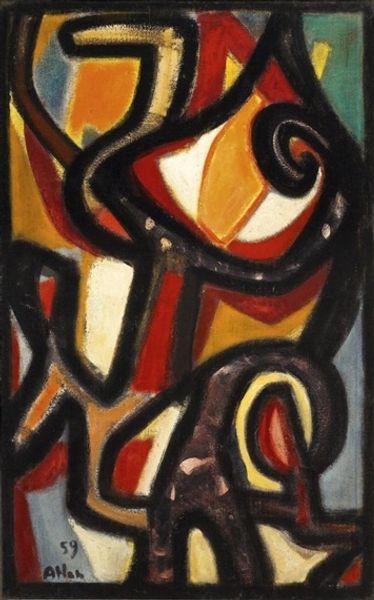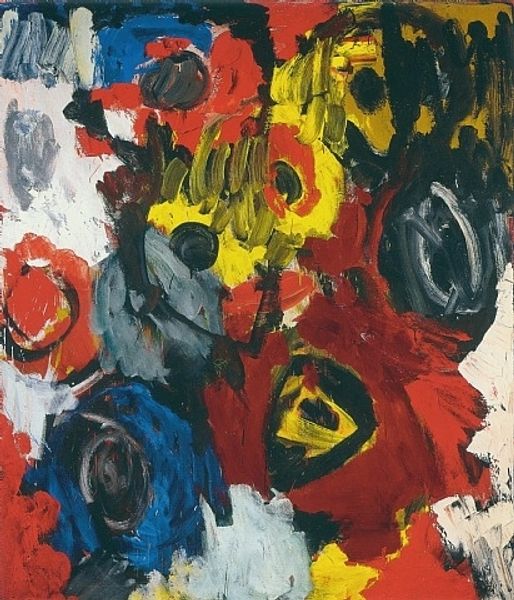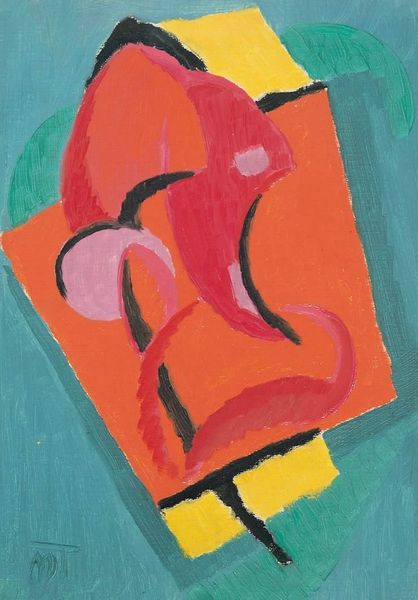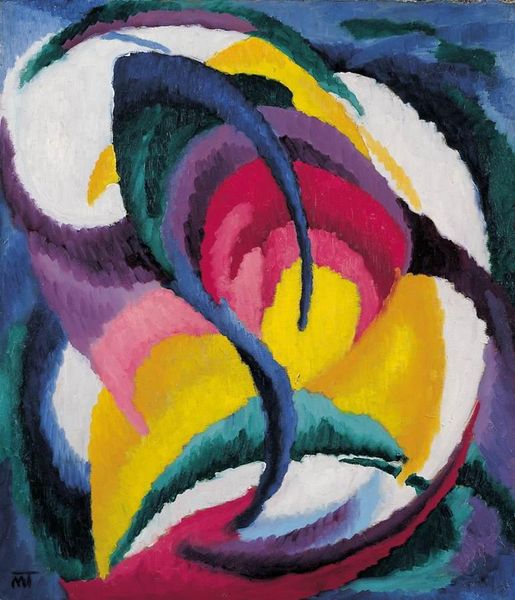
Copyright: Grace Pailthorpe,Fair Use
Curator: I find myself immediately drawn to the textures, the layering of impasto paint gives it such a tactile quality. Editor: Let's take a look at Grace Pailthorpe’s "Abstrac" from 1957, a bold foray into abstract expressionism executed in oil paint. What strikes you particularly about these textures? Curator: The sheer physicality of the paint application! You can almost feel the artist's hand at work, pressing and layering these strokes. The materiality speaks of an energetic process. There’s a visible tension between control and letting the medium dictate its form. I’d say it challenges the idea of painting being only about illusion, bringing labor to the surface. Editor: Pailthorpe's background is really interesting when we view her art and her era, as she was formally trained as a surgeon. Alongside her partner Reuben Mednikoff, she was deeply involved in surrealism, especially in its preoccupation with psychoanalysis and the unconscious mind. Her surrealist practice extended into the realm of art theory. Curator: So, she literally transferred some of her knowledge into practice in both a studio setting and in psychiatric setting, too, that would add a whole other level to production… It looks to me like a Fauvist riot but pushed through surrealist process. Editor: You can certainly see the echoes of Fauvism in the vibrant colour palette—those intense yellows, reds, and blues. Given her interest in psychoanalysis, one could interpret this composition as a landscape of the mind, an externalization of inner emotional space from what Pailthorpe believed the psyche was comprised of, the internal landscapes of each person. Curator: Perhaps those sharp, contrasting edges around the forms reflect inner turmoil, though those black outlines confine her internal expressions to the bounds she defines, at least formally speaking. I would also observe, as far as the history of women’s involvement in abstract expressionism, that, from what history books tell, it was a field not entirely friendly to women, and many important contributions were sidelined from a social and institutional perspective. Editor: Indeed, it’s important to recognize those gendered dynamics within the art world during that period, where male abstract expressionists often overshadowed their female counterparts, unfortunately... I do enjoy its raw and almost primal nature; there’s something profoundly human in it that surpasses mere formalism. Curator: Absolutely. It feels deeply personal. I will agree. Editor: I concur! It speaks to how art transcends pure abstraction, to tap into universal feelings about both its creation and purpose, perhaps about just… Being.
Comments
No comments
Be the first to comment and join the conversation on the ultimate creative platform.
